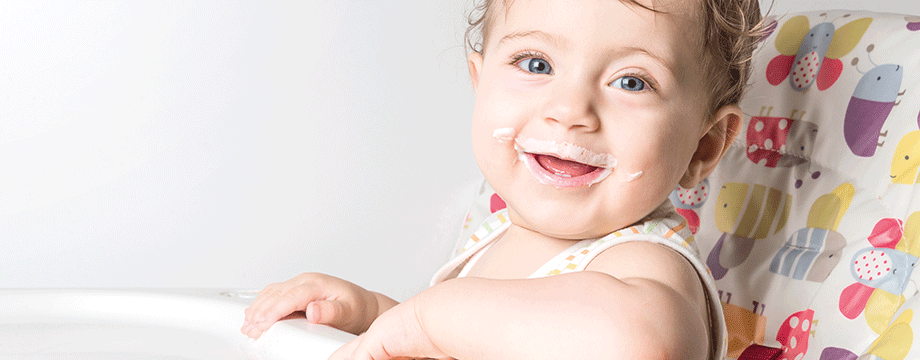First steps

Children’s nutrition coach Dr Colette Reynolds offers some top tips for weaning
Weaning is process of gradually introducing solid food to a baby during their first year of life. Weaning offers a unique window of time to establish lifelong healthy eating habits to ensure babies eat a wide range of nutritious foods. It is therefore really important that a baby experiences lots of different tastes and textures during their first year.
It is vital to wait until your baby is four months old (17 weeks) before introducing solids, so that their digestive system is mature enough to handle food and this also reduces the risk of developing allergies. It is a good idea to first introduce your baby to solids when they are well and have no signs of being sick, like a stuffy nose that may negatively affect feeding.
First things first
Most babies are ready for solids at around six months old. Yet, babies are all individual, so look for the following signs that it is safe to start solids with your baby:
1. She can hold her head in a steady, upright position.
2. She can sit upright when supported, like in a highchair.
3. She can swallow food and move it to the back of her mouth, rather than automatically pushing the food out of her mouth.
It is also important not to wait too long after six months to start introducing food as it is necessary to introduce iron-rich solid foods to meet her nutritional requirements such as meat, fish and eggs. It is also a good idea to add a food rich in vitamin C at the same time, such as green leafy vegetables.
Weaning is really a unique time for ensuring babies get the best possible start on their food journey. This is because when babies start on solids, they are often the most eager to try different foods. At around 18 months of age this often changes as toddlers become more wary about eating foods that they do not recognise and may refuse new or unfamiliar foods.
A variety of veggies
It is great to offer a variety of veggies to babies early in weaning. It is best to initially offer single vegetables on their own so that babies get used to their appearance, taste and texture. Aim to serve lots of variety and include different coloured veggies. It is also good to include fewer sweet veggies such as aubergines, asparagus and leafy greens like spinach.
Babies that are not exposed at an early age to these tastes may have more difficulty accepting them later. It is also important to serve different textures during the first year as babies who have not experienced different textures during this time may find different textures more difficult to accept later.
It is best to avoid the following for babies in their first year due to safety reasons:
- Honey (may contain bacteria that can cause a rare form of food poisoning)
- Whole or chopped nuts (because of the risk of choking)
- Raw or lightly cooked shellfish (can increase the risk of food poisoning)
- Raw and undercooked eggs (may contain salmonella, a type of bacteria that can cause food poisoning)
- Rice milk or rice drinks (due to concerns over arsenic, a substance that is found naturally in low levels in rice).
Once you keep the above list in mind, you can see weaning as a great time to introduce your baby to the nutritious foods you and your family eat.
Dr Colette Reynolds is a nutrition and child’s healthy eating coach, founder of Growing Healthy Eaters and mother to two young boys. She offers one-to-one parenting support online to help parents gain the understanding, confidence and specific know-how so their children eat and enjoy a variety of nutritious foods and develop lifelong healthy eating habits. See growinghealthyeaters.ie
Read previous Your Health articles here...
Read articles from our latest issue here...